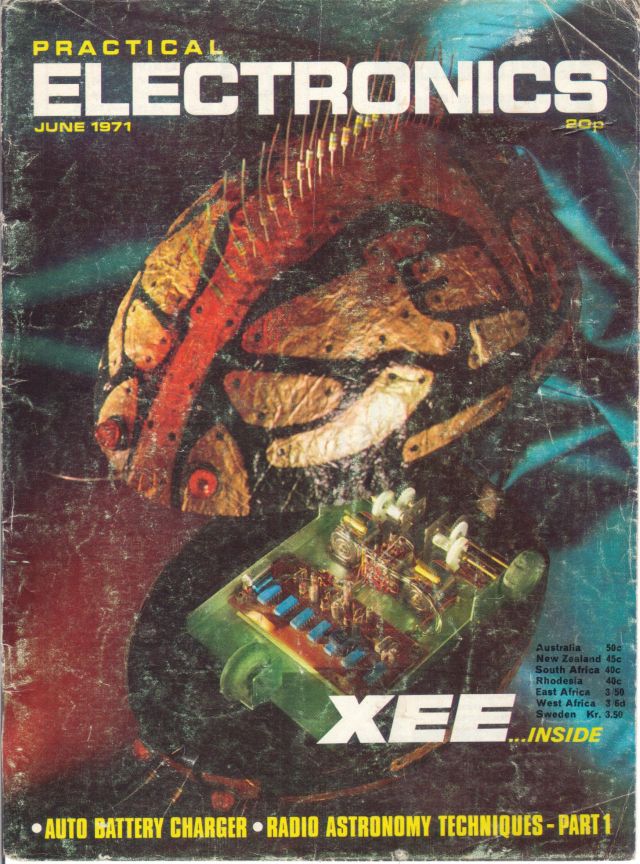
 XEE -pdf Practical Electronics June-July 1971
XEE -pdf Practical Electronics June-July 1971
Practical Electronics June-July 1971
XEE HERE!
An animal approximation utilising integrated circuits to process optical and tactile sensing together with a random control to give reasonable lifelike responses.
By G. BrownThere has been a considerable amount of correspondence relating to "electronic animals" following the earlier series on Bionics and the articles about EMMA last year. Readers' letters, in the main, have emphasised the need for less expensive drive systems in these "animals" and, among other things, pointed to the shortcomings of the noise cell arrangement used in EMMA.
Unlike the earlier models, XEE employs integrated-circuitry for all its control logic, using discrete components only where it is more simple and cheaper to do so. Further differences include the bodiment of relays in the muscle control circuitry, rather than transistors which only afford a modicum of isolation between logic and drive systems, and which, because of their relatively high Vcc lose volts that could be usefully driving motors.
Related to EMMA, XEE is mechanically a sort of "middi" version; indeed, this new animal represents just the beginning of others which, physically, will tend towards the "mini". We will examine the anatomy of this latest "bug" which, not inappropriately, got its name from a computer that had been programmed to generate random letter and word sequences.SYSTEM CONCEPT
Basically, XEE has two senses, one, an electro-optical sense provided by a pair of photo-sensitive resistors; and the other, a load monitoring arrangement associated with the muscle control circuitry.
How XEE ultimately decides to respond as a result of inputs to these senses is determined by a subsystem employing a clock and random generator.
Several degrees of freedom are provided permitting turning to the right, turning to the left, driving forward, driving in reverse, and stopping. These functions, over which there is a fair amount of random control, thus provide XEE with a reasonably lifelike repertoire of responses. The response to optical inputs is additionally in part controlled by a random function, but more about this later on…………
CONCLUSION
XEE is only a partially non-deterministic animal. That is to say it does not always respond to stimuli with any predictability. However, despite this, the beast does stand a greater chance of "survival" than, say, one which acts with 100 per cent certainty. Nevertheless, this in no way implies that it has any intelligence, although it does have the chance of reacting as if it did.